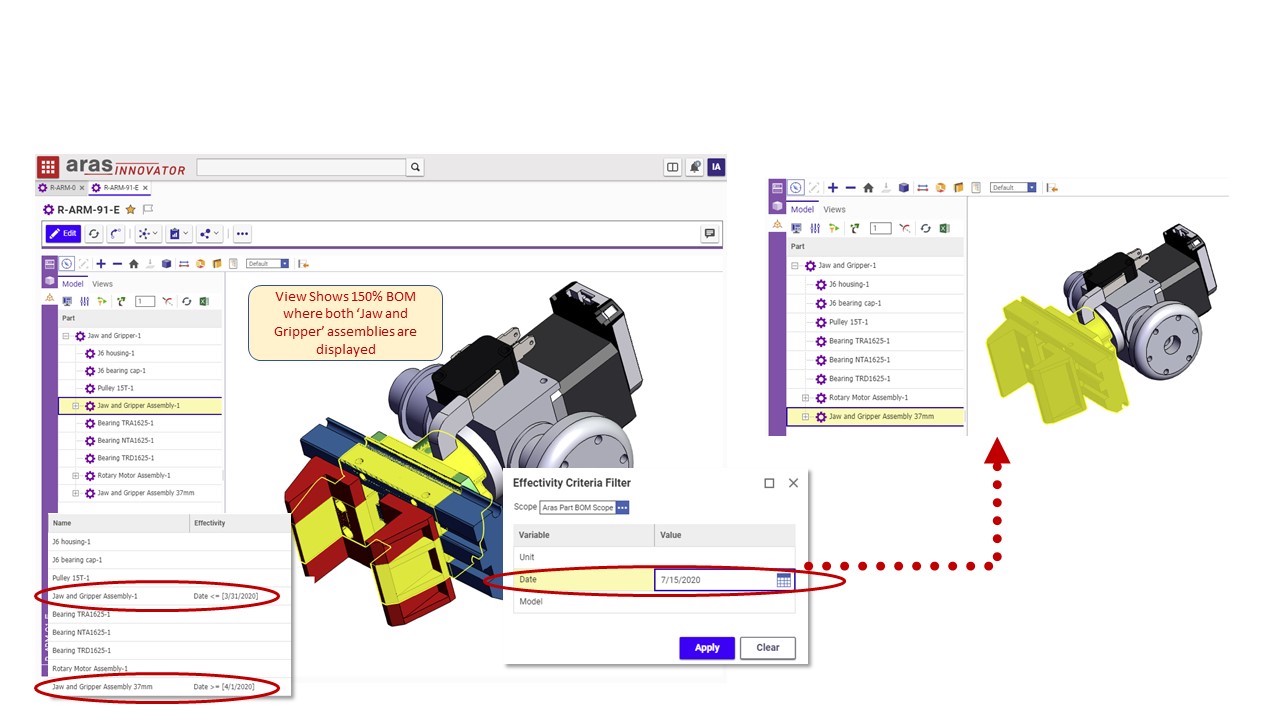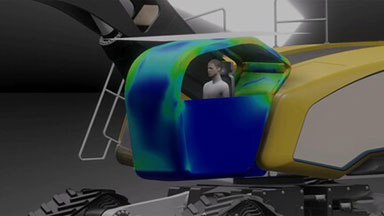Aras Tightens Up the Digital Thread
Dynamic Product Navigation lets users visually display product data based on business attributes for greater context.

With Dynamic Product Navigation, 3D views are constructed dynamically in response to a user-defined query. Image Courtesy of Aras
Latest News
July 8, 2020
Aras is giving power to the concept of the digital thread via a new platform service that provides a visually-oriented way to browse and search 3D assembly data within the context of specific business needs.
As opposed to getting visual representations of 3D mechanical parts or assemblies using CAD software, which requires specialized software and a core set of knowledge usually relegated to engineers, Aras Dynamic Product Navigation allows users across disciplines to interactively display 3D models based on business attributes for greater context. Through the dynamic interrogation capabilities, business users in manufacturing, procurement, or quality can view the product in the proper context to answer specific questions—for example, highlighting parts with change orders pending or visually identifying items that have failed a set of simulation criteria.
“All PLM systems provide search capabilities that return lists of business objects, however, enabling users to easily construct search queries based on relationships between these business objects and link them directly within customized 3D views enables users to understand the interdependencies between parts,” explains Christine Longwell, in product marketing at Aras.
Available as a platform service for visualization across the entire Innovator PLM platform and for custom applications, the browser-based DPN cuts across disciplines and data silos to allow users in different parts of the organization to leverage product data for their particular tasks and responsibilities. For example, manufacturing planners could employ the 3D visualization services to plan for manufacturing operations while technical authors could tap the same data set to produce graphics for technical documentation, and service engineers using it to understand how to maintain a product in the field. With DPN, users can dynamically visualize 3D product data based on user-defined selection logic, facilitating collaboration for myriad use cases across the entire product lifecycle.
“For example, users could filter parts within an assembly that associated problem reports, construct assembly views based on effectivity criteria, or highlight the display of part geometry using custom color and transparency values,” Longwell explains. “Users can then save these views to use for internal design reviews, technical illustrations, or to support maintenance operations. Finally, by using the core Innovator digital thread capability, users can navigate to related PLM content directly within the 3D Viewer.”
By delivering a centralized data set, manufacturing, service, and quality can begin planning and documentation as portions of the product are being released. “This enables concurrent design and shortens time to market,” Longwell says. “When the various disciplines and roles access a single data set across applications, concerns over outdated data are eliminated.”
For a look at how Dynamic Product Navigation works, check out this video.
More Aras Coverage
Subscribe to our FREE magazine, FREE email newsletters or both!
Latest News
About the Author
Beth Stackpole is a contributing editor to Digital Engineering. Send e-mail about this article to [email protected].
Follow DE





